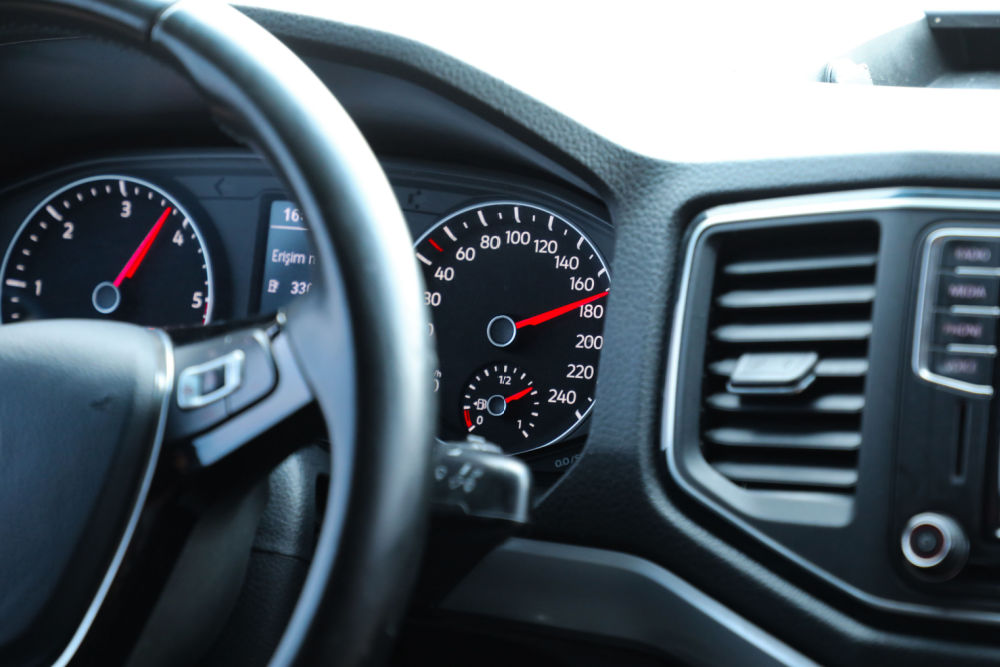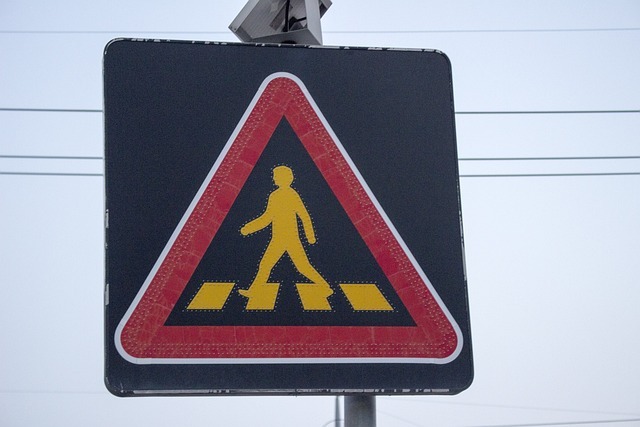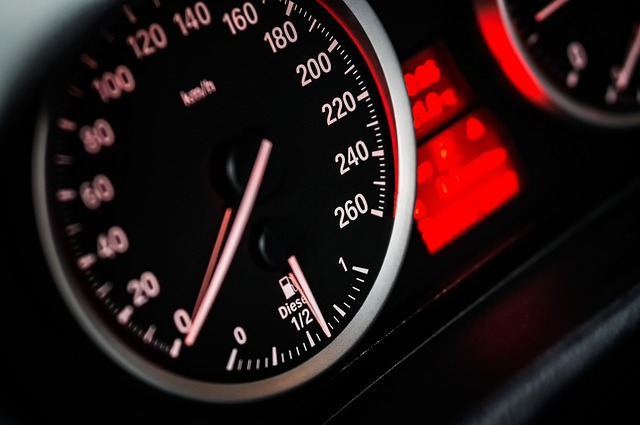Vehicle speed is a critical factor in pedestrian safety. When a vehicle is moving at high speeds, it is more difficult for drivers to react quickly to pedestrians who may be crossing the street or walking alongside the road. This can lead to serious injuries and fatalities if a collision occurs. This article will explore the relationship between vehicle speed and a pedestrian accident or serious injury, as well as some strategies that can be used to keep car speed and reduce the risk of pedestrian accidents.

The Impact of Vehicle Speed on Pedestrian Injury:
Studies have consistently shown that vehicle speed is a key determinant of pedestrian injury severity in the event of an accident. The faster a vehicle is traveling at the time of impact, statistically significant the greater the pedestrian accident risk of serious injury or death. For example, a pedestrian hit by a car traveling at 20 mph has a 95% chance of survival without severe injury, while a pedestrian hit by a car traveling at 40 mph has only a 15% chance of survival without severe injury or serious injury..
One reason for this is that at higher and higher traffic speeds are, the force of impact is greater, which increases the likelihood of severe injuries. In addition, higher travel speeds can make it more difficult for drivers to react to sudden changes in the environment, such as a pedestrian stepping out into the road. At higher speeds, drivers have less time to brake or swerve to avoid a collision, which can result in a more often severe injury or fatal injury upon impact.
Pedestrian injuries in pedestrian crashes can also be influenced statistically significant part by the type of motor vehicle being involved in the collision or pedestrian accident. For example, larger vehicles such as trucks and SUVs tend to cause more severe injuries detect pedestrians than smaller passenger cars. This is because larger motor vehicles often have a greater mass and can therefore transfer more energy to the pedestrian upon impact.
Strategies for Reducing Pedestrian Injuries:
There are several strategies that can be used to reduce the risk of pedestrian crashes, both of serious injury in pedestrian crashes and deaths in pedestrian crashes and injuries caused by pedestrians struck by vehicle collisions. These include:
- Reducing Vehicle Speeds: One of the most effective ways to reduce pedestrian injuries is to lower the speed limit in areas where pedestrians are likely to be present. For example, many cities have implemented 20 mph speed zones in residential areas and near schools to protect pedestrians. Lowering the speed limit can give drivers more time to react to unexpected situations and reduce the force of impact in the event of a collision.
- Improving Infrastructure: Providing safe infrastructure for pedestrians, such as sidewalks, crosswalks, and pedestrian islands, can help to reduce the risk of accidents. For example, installing pedestrian crossing signals can alert drivers to the presence of pedestrians and give them time to stop. Providing adequate lighting can also improve visibility and reduce the risk of accidents at night.
- Education and Awareness Campaigns: Educating drivers and pedestrians about safe behavior on the road can also help to reduce the risk of accidents. This can include campaigns that encourage drivers to slow down in residential areas and near schools, as well as campaigns that educate pedestrians on the importance of using crosswalks and looking both ways before crossing the road.
- Autonomous Vehicles: The development of autonomous vehicles has the potential to greatly reduce the risk of pedestrian accidents. Autonomous vehicles are designed to detect and respond to pedestrians in real-time, which can help to reduce the risk of accidents caused by driver error. However, widespread adoption of autonomous vehicles is still several years away, and in the meantime, other strategies will be needed to reduce the risk of pedestrian accidents.
Vehicle speed is a critical factor in pedestrian accident safety. Higher vehicle travel speeds can increase the risk of severe injuries and fatalities in the event of a collision, and reducing vehicle travel speeds and traveling speeds in areas where pedestrians are likely to be present can help to reduce this risk. Other strategies, such as improving infrastructure, education and awareness campaigns, and the development of autonomous vehicles, can make vehicle travel at lower speeds and also help to reduce the risk of pedestrian accidents. By implementing a combination of these strategies, we can work to make our roads
Other measures: Speed Cameras and Traffic Calming
In addition to the strategies mentioned in the previous section, there are other measures that can be taken to make traffic signals and reduce the risk of fatal accidents, a pedestrian accident and accidents caused by motor or vehicle traveling over the speed limits.
One such measure to impact speed, is the use of speed cameras. Speed cameras are devices that use radar or other technologies to detect vehicles traveling over the speed limit and capture photographic evidence of the violation. In some jurisdictions, speed cameras are used to enforce speed limits in areas where pedestrian safety is a concern, such urban areas such as near schools or in residential neighborhoods.
The use of speed cameras has been shown to be effective in reducing speeding and pedestrian crashes and improving road safety. For example, a study conducted in the UK found that the use of speed cameras reduced pedestrian deaths and the number of collisions involving pedestrians by 20%, at average speeds while a study in the US found that speed cameras reduced the number of both pedestrian deaths and fatalities in speed-related crashes at average speeds by 30%.
Another measure that police report can be taken to further traffic safety reduce the risk of pedestrian accidents is the use of traffic calming measures. Traffic calming measures are physical modifications to the road environment that are designed to slow down traffic and improve safety for pedestrians and other road users. Examples of traffic calming measures include speed bumps, roundabouts, and chicanes.
Traffic calming measures have been shown to be effective in reducing motor vehicle top speeds and improving safety for motor vehicles and pedestrians. For example, a study conducted in London found that the installation of speed humps reduced vehicle speeds by 10-15% and reduced pedestrian age and the number injury severity of collisions involving motor vehicles and pedestrians by 47%.
Finally, it is important to recognize that both national highway traffic safety and reducing the risk of both pedestrian fatalities and accidents caused by vehicle speed requires a comprehensive approach that involves multiple stakeholders. This includes policymakers, law enforcement agencies, transportation officials, and the public. By working together, these stakeholders can develop and implement effective strategies for less car speed, national highway traffic safety and improving pedestrian safety.
Vehicle speed is a critical factor in pedestrian safety, and reducing traffic speeds in areas where pedestrians are likely to be present is an important step in improving pedestrian safety. Strategies for reducing speed limits such as improving infrastructure, education and awareness campaigns, the use of speed cameras, traffic calming measures, and the development of autonomous vehicles can all help to keep traffic speeds and reduce the risk of pedestrian accidents caused by vehicle speed. By implementing a comprehensive approach that involves multiple stakeholders, we can work to higher traffic speeds and make our roads safer for pedestrians and other road users.

Emerging Traffic and Motor Vehicle Safety Technologies:
There are also several emerging technologies that have the potential to improve vehicle speed and pedestrian injury safety by addressing the issue of vehicle speed. One such technology is intelligent speed assistance (ISA), which is a system that uses GPS and road mapping technology to monitor a vehicle's speed and provide the car traveling driver with feedback if they exceed the speed limit.
ISA has been shown to be effective in reducing speeding, serious injury and fatal car speed and accidents and improving road safety. A study conducted in Sweden found that the use of ISA reduced car speed and the number of fatalities and serious injuries in car speed-related crashes by 50%. The European Union has also recently mandated that all new cars sold in the EU must be equipped with ISA by 2022.
Another emerging technology that has the potential to improve pedestrian safety is vehicle-to-everything (V2X) communication. V2X communication is a system that allows vehicles to communicate with other vehicles, as well detect pedestrians, as with infrastructure such as traffic signals, lights, stop signs and pedestrian crossings. This technology can be used to alert drivers to the stop signs, traffic signals, pedestrian accident and the presence of pedestrians and provide them with information on the pedestrian's location and movements.
V2X communication has the potential to greatly improve pedestrian safety by providing real-time information oncoming traffic to drivers and reducing the risk of fatal accidents often caused by pedestrians struck by driver error. For example, if a pedestrian is crossing the road and a vehicle is approaching at high speed, the V2X system can alert the driver and provide them with information oncoming traffic and the pedestrian's location, allowing them to take evasive action and avoid a collision.
However, it is important to recognize that emerging technologies such as ISA and V2X communication are still in the early stages of development, and it will be several years before they are widely adopted. In the meantime, it is important to continue to implement proven strategies such as speed reduction, infrastructure improvements, traffic signals, education and awareness campaigns, and the use of speed cameras and traffic calming measures to make traffic signals improve pedestrian safety.
In addition to these strategies, it is also important to address the root causes of speeding, such as driver behavior and attitudes. This can include initiatives such as driver education and training programs, as well as enforcement measures such as fines and penalties for speeding violations.
Q: How does vehicle speed impact pedestrian safety?
A: Vehicle speed is a critical factor in pedestrian safety. Higher speeds increase the impact speed and force of impact in the event of a collision, which increases the likelihood of severe injuries or fatalities. In addition to severe injury, higher speeds make it more difficult for drivers to react to sudden changes in the environment, such as a pedestrian stepping out into the road.

Q: What are some strategies for reducing the risk of pedestrian accidents caused by vehicle speed?
A: Strategies for reducing the risk of pedestrian accidents caused by vehicle speed include reducing vehicle speeds in areas where pedestrians are likely to be present, improving infrastructure such as sidewalks and crosswalks, education and awareness campaigns, the use of speed cameras and traffic calming measures in urban areas, and the development of emerging technologies to lower speeds, such as intelligent speed assistance and vehicle-to-everything communication.
Q: What are some examples of infrastructure improvements that can improve pedestrian safety?
A: Examples of infrastructure improvements that can improve pedestrian safety include providing safe sidewalks and crosswalks, installing pedestrian crossing signals, providing adequate lighting, and installing pedestrian islands.
Q: How effective are education and awareness campaigns in improving pedestrian safety?
A: Education and awareness campaigns can be effective in reducing speed limits and improving pedestrian safety by educating drivers and pedestrians on safe behavior on the road. For example, campaigns that encourage drivers to slow down in residential areas and near schools, as well as campaigns that show stop signs, educate pedestrians on the importance of using crosswalks and looking both ways before crossing the road, and pedestrian age, can help to reduce the risk of accidents.

